Valley of the Shadow of Death: A Review of Anthony Wong’s Striking Role as a Doubting Christian Pastor
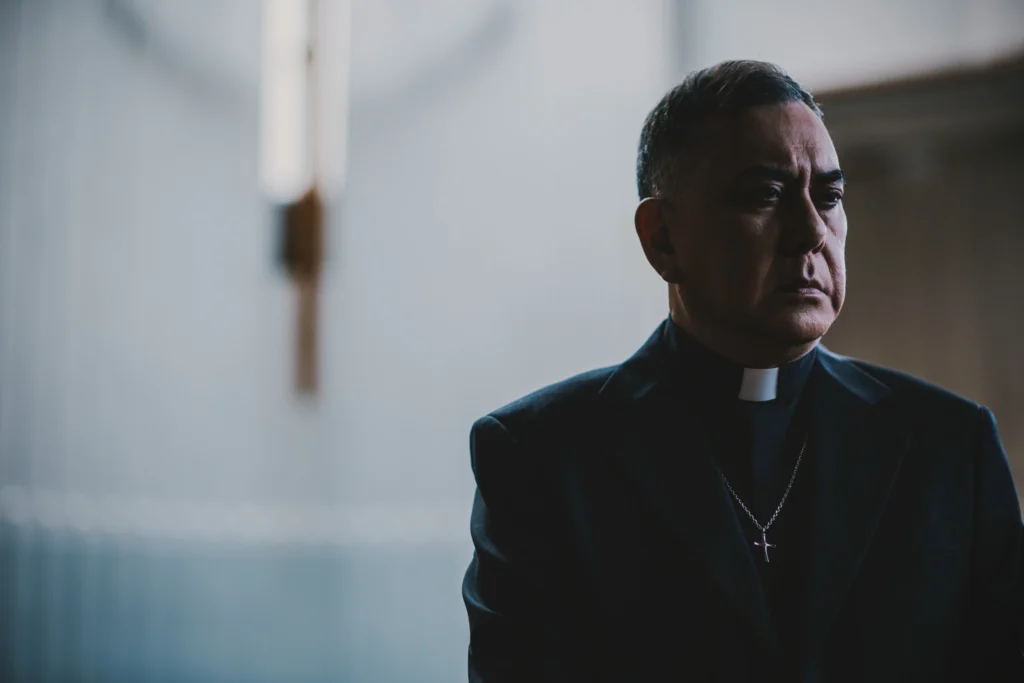
Anthony Wong's Striking Role as a Doubting Christian Pastor
Introduction to the Film
‘Valley of the Shadow of Death’ is a compelling exploration of faith and uncertainty, revolving around the character of a Christian pastor portrayed by Anthony Wong. This film delves into the struggles faced by individuals when confronted with crises that challenge their long-held beliefs. The narrative is set against a backdrop that is both physically and emotionally tumultuous, emphasizing the themes of doubt, redemption, and the quest for understanding one’s faith in the face of adversity.
The storyline intricately weaves the pastor’s journey, as he grapples with personal demons and theological dilemmas. As the plot unfolds, audiences are invited to witness the complexities of his character, who is not solely defined by his religious role but also by his vulnerabilities. Through Wong’s powerful performance, the film captures poignant moments of introspection that resonate with anyone who has ever questioned their beliefs or faced uncertainty in their lives.
Filmmaker’s intentions are clear: to challenge traditional depictions of faith in cinema and instead present a more nuanced perspective that encompasses both belief and skepticism. The emotional depth of ‘Valley of the Shadow of Death’ invites viewers to reflect on their own spiritual journeys while navigating through the universal themes of hope and despair. It is through the lens of this pastor’s internal conflict that the film honors the sincerity of doubt as an integral part of the faith experience.
This thought-provoking film positions itself as significant within the realm of faith-based narratives, pushing boundaries to allow for a richer and more diverse conversation around spirituality. By addressing the complexities of faith through an authentic portrayal, ‘Valley of the Shadow of Death’ ultimately stands as a profound commentary on the human experience, encouraging audiences to consider the intricacies of their own beliefs.
Overview of Anthony Wong’s Character
In the film “Valley of the Shadow of Death,” Anthony Wong delivers a compelling performance as a Christian pastor grappling with deep-seated doubts about his faith. His character, marked by an intricate backstory, provides a captivating exploration of belief, morality, and inner turmoil. Having dedicated his life to serving his congregation, Wong’s character faces profound existential questions that challenge his previous certainties.
The pastor’s journey is not a straightforward one; it is laden with moral conflicts that arise primarily from personal experiences and encounters with the world around him. As he confronts tragedy within his community and hypocrisy within the church, the pastor’s faith begins to waver. This internal struggle is a central theme of the film, and Wong’s portrayal transforms these abstract dilemmas into palpable emotions, allowing the audience to empathize with his plight. His expressive acting captures the essence of a man at the crossroads of belief and skepticism.
As the plot unfolds, Wong’s character evolves, showing how doubt can coexist with faith. He begins to question not only the doctrines he once upheld but also his ability to lead others in a path of righteousness amidst adversity. Wong captures this evolution masterfully, presenting a nuanced character who is both relatable and complex. The layers of his performance enrich the narrative, inviting viewers to reflect on their understanding of faith and the human condition.
Ultimately, Anthony Wong’s striking role as the doubting Christian pastor highlights the intricacies of belief systems and showcases the pandemic nature of doubt, making the character’s journey deeply impactful and thought-provoking.
Film’s Central Themes: Faith vs. Doubt
In “Valley of the Shadow of Death,” the central themes of faith and doubt are intricately woven into the narrative, creating a profound exploration of spiritual struggle. The character portrayed by Anthony Wong, a doubting Christian pastor, embodies the conflict many individuals face in their personal journeys of belief. This struggle resonates deeply with viewers, encouraging them to reflect on their own faith experiences and the doubts that often accompany them.
The film presents faith not as an unwavering certainty but as a complex, evolving entity. Wong’s character grapples with profound questions that challenge his long-held beliefs. This internal turmoil is relatable; many individuals experience similar conflicts between their faith and skepticism. The portrayal of doubt as a natural component of faith emphasizes the idea that questioning is not the antithesis of belief but rather an essential aspect of spiritual growth. Viewers may find themselves identifying with the pastor’s plight as he navigates through his uncertainties, prompting them to examine their own beliefs critically.
Moreover, the interplay between faith and doubt reflects broader philosophical discussions, bridging religious and secular viewpoints. The film invites audiences to consider how doubt can lead to a more nuanced understanding of faith, suggesting that the absence of certainty can be a space for development and deeper contemplation. By confronting these themes, “Valley of the Shadow of Death” encourages introspection about personal beliefs, thus serving as a catalyst for dialogue on spirituality across different contexts.
Ultimately, the film transcends its narrative by compelling viewers to engage with the fundamental questions of existence, belief, and moral integrity, making it a thought-provoking piece that stimulates heartfelt consideration of one’s own faith journey.
Cinematography and Visual Style
The cinematography of “Valley of the Shadow of Death” plays a pivotal role in shaping the film’s narrative and artistic essence. The visual elements are meticulously crafted to evoke the emotional depth of Anthony Wong’s portrayal of a doubting Christian pastor. The choice of camera angles and movements creates a dynamic visual that draws viewers into the protagonist’s internal struggles. For instance, close-up shots capture the nuanced expressions of Wong’s character, revealing layers of doubt and vulnerability that resonate with the audience, enhancing the film’s psychological complexity.
Lighting is another significant aspect that enriches the film’s visual storytelling. The use of natural light juxtaposed with shadows creates a palpable tension, reflecting the protagonist’s conflict between faith and skepticism. Soft, diffused lighting during intimate moments emphasizes the character’s moments of reflection, while harsher, contrasting light during crises heightens the film’s emotional stakes. This play of light and shadow not only emphasizes the themes of doubt and redemption but also grounds the narrative in a visually arresting manner that encourages viewers to engage deeply with the story.
Moreover, the set design contributes significantly to the film’s immersive ambiance. The environments, designed to mirror the pastor’s turmoil, often feature stark, minimalist elements that evoke a sense of desolation and introspection. Places of worship, depicted with a haunting beauty, contrast with the character’s turmoil, reinforcing the overarching themes of faith and uncertainty. Through thoughtful cinematography and a cohesive visual style, the film captivates its audience, crafting a powerful narrative that resonates both emotionally and thematically. The careful interweaving of these visual elements transforms the viewing experience into a contemplation on faith, identity, and the human condition.
Supporting Characters and Their Impact
In Anthony Wong’s compelling portrayal of a doubting Christian pastor within the narrative of “Valley of the Shadow of Death,” the supporting characters play pivotal roles in shaping the protagonist’s spiritual and emotional journey. Each character adds a unique dimension to the main storyline, collectively influencing the pastor’s struggles and beliefs. This ensemble fosters a rich exploration of faith, doubt, and the human experience.
One notable character is the pastor’s mentor, an older clergyman who embodies traditional faith and unwavering belief. His conversations with the pastor are laden with philosophical arguments that challenge the pastor’s crises. This mentor serves as a stabilizing force, pushing the pastor to confront his doubts while also providing a model of steadfast belief. Such dynamics illustrate the importance of mentorship and the multifaceted nature of spiritual guidance.
Moreover, the pastor’s family members contribute significantly to the narrative. A spouse, who grapples with her own faith issues, poses challenging questions that mirror the pastor’s internal conflict. Her emotional turmoil invites the audience to witness the intimate struggles often hidden behind closed doors in religious contexts. This character’s candidness allows the pastor to reflect on his own beliefs and the personal implications of his spiritual doubts.
Additionally, the church community, depicted through various congregation members, showcases diverse perspectives on faith and spirituality. This spectrum of beliefs enriches the narrative, revealing how communal interaction can both support and challenge one’s faith. Some members offer encouragement, advocating for resilience in the face of doubt, while others embody skepticism, articulating criticisms that the pastor must confront.
Through these supporting characters, Wong’s portrayal of the pastor’s journey is intricately woven into a multifaceted exploration of personal faith, societal influence, and the complexities of belief, showcasing how interconnected relationships can shape one’s spiritual landscape.
Critical Reception and Audience Reactions
Anthony Wong’s performance in “Valley of the Shadow of Death” has generated a wide array of responses from both critics and audiences, reflecting the complexity of the themes addressed in the film. Critics have generally praised the film for its thoughtful exploration of faith and doubt, commending Wong for his portrayal of a Christian pastor grappling with deep existential questions. Many highlight the raw emotional depth he brings to the character, which resonates strongly with viewers experiencing similar struggles. The film’s ability to provoke introspection regarding personal beliefs has sparked meaningful discussions in various review platforms and film forums.
However, the film has not been without its controversies. Some audiences have expressed discomfort with the film’s candid depiction of doubt and crisis of faith, interpreting it as a challenge to traditional beliefs. This has led to polarized opinions, particularly among more conservative viewers who may find the film’s message troubling. Moreover, debates surrounding the portrayal of Christianity in popular media have emerged, raising questions about the impact of such narratives on public perception of faith.
The demographic reactions to “Valley of the Shadow of Death” vary significantly. Younger viewers, especially those navigating their beliefs in a rapidly changing world, tend to find resonance in the pastor’s trials. They appreciate the film’s raw honesty and its willingness to embrace uncertainty, often relating to its themes on a personal level. In contrast, older audiences may approach the film with more traditional views on faith, leading to skepticism about its narrative decisions. Ultimately, both critical acclaim and audience reception underscore the film’s significance in contemporary discussions about faith, identity, and the human condition, illustrating how “Valley of the Shadow of Death” balances artistic expression with a profound exploration of spiritual dilemmas. In conclusion, Wong’s role has not only captivated audiences but also ignited vital conversations about belief in today’s society.
Psychological and Emotional Depth
In Anthony Wong’s compelling performance in “Valley of the Shadow of Death,” the psychological intricacies of his character, a doubting Christian pastor, are profoundly explored. The film delves into the emotional burden that accompanies faith, particularly the conflict between belief and uncertainty. Wong’s ability to manifest the inner turmoil of his character invites viewers to confront the perennial struggle between doubt and conviction, a theme that resonates deeply within the realm of spirituality.
Wong’s portrayal captures the essence of a man grappling with his beliefs in the face of unrelenting life challenges. The psychological implications of his doubts become increasingly evident as he navigates moments of crisis and despair. By humanizing the character, Wong enables the audience to empathize with the pastor’s internal battles, reminding them that the struggle with faith is not unique but is, in fact, a shared human experience. His nuanced performance sheds light on the emotional weight carried by those in positions of spiritual leadership who may feel inadequate or disconnected from their own teachings.
The emotional depth in Wong’s performance is accentuated by his expression of vulnerability, allowing viewers to witness the intimate thoughts and feelings within a seemingly steadfast individual. The themes of existential dread and the search for meaning become intertwined, embodying the psychological complexities faced by many who wrestle with belief amidst personal crisis. This portrayal sheds light on the wider implications of faith and doubt, pushing the narrative beyond a mere storyline and into an exploration of what it means to confront one’s own convictions.
Overall, the psychological and emotional dimensions of Wong’s character elevate the film, transforming it into a poignant commentary on the human condition and the spectrum of faith. These elements contribute to making “Valley of the Shadow of Death” an impactful cinematic experience.
Director’s Vision and Narrative Techniques
In “Valley of the Shadow of Death,” the visionary directing of Anthony Wong is pivotal in shaping the film’s narrative structure and emotional depth. Wong employs a multitude of stylistic techniques that enhance the overall storytelling experience, immersing the audience in the complex journey of a doubting Christian pastor. One of the most effective methods Wong utilizes is the juxtaposition of contrasting visuals and tones, which serve to underscore the thematic dichotomies of faith and doubt, hope and despair.
The director’s choice of shot composition plays a crucial role in building tension throughout the film. Wong often frames his characters in isolation, using close-ups to capture the intricate emotions of the pastor as he grapples with his beliefs. This approach invites viewers into the intimate struggles of the protagonist, fostering a sense of empathy for his existential dilemmas. Coupled with strategic use of lighting—shifting from soft, warm hues to stark, cold contrasts—Wong is able to evoke a range of emotions that resonate deeply with the audience.
Additionally, Wong’s use of sound design further enhances the narrative’s impact. By incorporating subtle background scores alongside jarring sound effects, he effectively creates an atmosphere charged with uncertainty and tension. The unpredictability of the audio elements mirrors the pastor’s internal conflict, compelling the audience to remain engaged with the unfolding story. Furthermore, Wong’s decision to intersperse moments of silence allows the audience to reflect on the pastor’s personal journey, illustrating how moments of stillness can be just as powerful as the dialogues presented.
Overall, Anthony Wong’s direction in “Valley of the Shadow of Death” reflects a masterful blend of visual and auditory elements that seamlessly weave together the threads of narrative. Through his innovative techniques, Wong invites viewers to engage with the weighty themes of faith and doubt, creating a cinematic experience that lingers long after the credits roll.
Conclusion: The Legacy of the Film
The film ‘Valley of the Shadow of Death’ serves as a poignant exploration of faith and doubt, narrated through the compelling performance of Anthony Wong as a Christian pastor grappling with profound personal crises. Wong’s portrayal not only highlights the inner turmoil faced by those in spiritual leadership but also emphasizes the broader challenges associated with faith in contemporary society. This representation resonates deeply within faith communities, provoking critical dialogue about the nature of belief, the existence of suffering, and the search for divine guidance amidst life’s adversities.
An essential legacy of the film is its cultural significance, as it sheds light on the often-taboos subjects of mental health and spiritual crises within the context of Christian doctrine. By presenting a pastor who questions his convictions, the film opens avenues for thoughtful discussion that can bridge generational and ideological divides. This aspect encourages congregations and believers to confront and discuss doubt openly, an endeavor which can ultimately strengthen their collective faith. The impact of such conversations may transcend the screen, influencing sermons, study groups, and personal reflections within various faith-based settings.



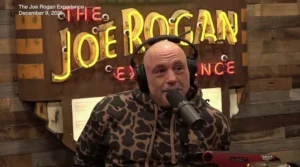


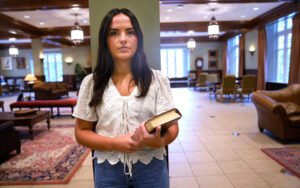
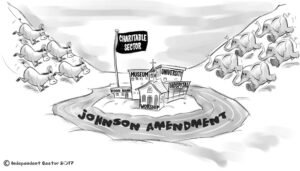
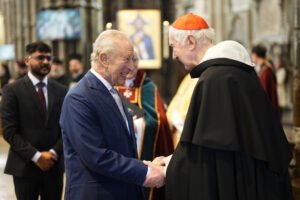

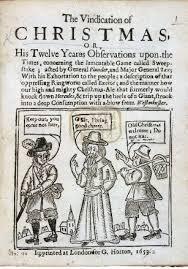
Leave a Reply
You must be logged in to post a comment.